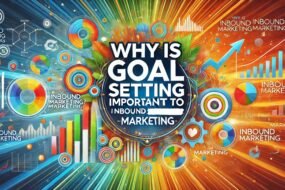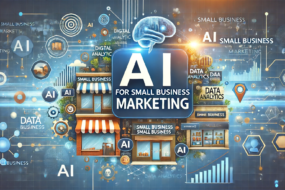
What is agile marketing? It is a marketing approach that utilizes the principles and practices of agile methodologies. What does this mean for your business? It means having self-organizing, cross-functional teams work in frequent iterations with continuous feedback.
The phase distribution marketing methodology has been gaining popularity in recent years as more and more businesses are beginning to realize the benefits of this approach. As an integral part of this methodology, Agile marketing can help companies to be more responsive to change, release products and features faster, and improve team collaboration.
When creating an Agile Marketing PowerPoint presentation, it’s crucial to highlight how embracing Agile principles can lead to increased adaptability, enhanced customer engagement, and more effective campaigns.
By leveraging an agile marketing framework, businesses can adapt their strategies quickly and efficiently to changing market dynamics and customer demands.
As detailed in the agile marketing PDF guide, this approach allows teams to work in iterative cycles, continuously testing and optimizing their campaigns based on real-time feedback and data analysis.
Moreover, by incorporating agile practices into their marketing strategies, businesses can save money by reducing the need for significant upfront investments and eliminating waste throughout the marketing process, making it a win-win situation for the company and its customers.
You need a strategic vision and short-, medium–, and long-term marketing planner to succeed with phase distribution marketing. Are you ready to make the switch to agile marketing?
What Is Agile Marketing?

Source : fabrikbrands.com
Agile marketing is a customer-centric, iterative approach to marketing that emphasises speed, collaboration, and continuous learning.
Furthermore, the multi-phase marketing technique is founded on agile marketing principles that emphasise continuous iteration, feedback, and team cooperation.
Furthermore, phase distribution marketing is customer-centric, which means that the marketing team’s decisions should constantly keep the customer’s demands and desires in mind.
Agile marketing examples can be seen in marketing teams that apply agile frameworks to help increase the quality of marketing work, boost innovation, improve processes, and work sustainably.
Characteristics Of Agile Marketing
Some of the key characteristics of agile marketing include:
Frequent Iterations
Agile marketing teams work in short sprints or cycles instead of long campaigns. This allows them to respond more to customer feedback and quickly make changes.
Continuous Feedback
In phase distribution marketing, customer feedback is not only encouraged, but it’s also built into the process. This allows teams to course-correct and ensures they’re always on the right track.
Cross-Functional Teams
Agile marketing teams are typically made up of members from different departments working closely together. This helps to break down silos and improve communication and collaboration.
Customer-Centric
Eventually, as mentioned above, It is all about putting the customer first. This means that everything from product development to marketing campaigns should be centred around the needs and wants of the customer.
Team Collaboration
Agile marketing teams work closely together to promote collaboration and communication. This helps ensure everyone is on the same page and tasks are completed efficiently.
Data-Driven Decision Making
Agile marketing teams rely on data to make decisions. This helps ensure that decisions are based on facts and not gut feelings.
Continuous Improvement
Agile marketing promotes a culture of continuous improvement, where teams regularly reflect on their processes, performance, and outcomes. They identify areas for enhancement, experiment with new approaches, and incorporate feedback to adapt and evolve their strategies.
Adaptability and Flexibility
Agile marketing embraces change and uncertainty, allowing teams to adapt quickly to shifting priorities, market dynamics, and customer needs. They prioritize responsiveness and flexibility over rigid plans and processes, enabling them to effectively seize opportunities and mitigate risks.
Transparent Communication
Agile marketing encourages open and transparent communication within teams and across departments. Regular stand-up meetings, sprint reviews, and retrospectives facilitate collaboration, alignment, and accountability, fostering a culture of trust and shared ownership.
Minimal Viable Product (MVP)
Agile marketing advocates for Minimum Viable Product (MVP), where marketers prioritize delivering value to customers through the least effort. They test hypotheses, launch pilot campaigns, and gather feedback to validate assumptions and iterate on strategies based on real-world data and insights.
Experimentation and Innovation
Agile marketing encourages experimentation and innovation, empowering teams to test new ideas, techniques, and channels. They embrace a culture of learning and exploration, celebrating successes and embracing failures as opportunities for growth and learning.
Alignment with Business Goals
Agile marketing aligns marketing activities and initiatives with broader business goals and objectives. Marketers focus on delivering tangible outcomes that contribute to revenue growth, customer acquisition, retention, and overall business success.
Agile Marketing Framework
Agile marketing is an approach that adapts agile principles and practices commonly used in software development to marketing.
It focuses on flexibility, collaboration, and continuous improvement to help marketing teams respond to changing market conditions and customer needs more effectively.
Some popular Agile Marketing Frameworks include Scrum, Kanban, and Scrumban.
Scrum
Scrum is a popular Agile framework characterized by its iterative and incremental approach to project management. In Scrum, work is organized into time-boxed iterations called sprints, typically lasting 1-4 weeks. During each sprint, a cross-functional team works collaboratively to deliver a potentially shippable product increment. Scrum emphasizes transparency, inspection, and adaptation, with regular ceremonies such as sprint planning, daily stand-ups, sprint review, and sprint retrospective.
Ceremonies of Scrum:
Scrum consists of several ceremonies (meetings) that help facilitate team communication, alignment, and progress tracking. The main ceremonies are:
- Sprint Planning: At the beginning of each sprint, the team and the product owner collaboratively decide which tasks will be completed during the sprint.
- Daily Standup (Daily Scrum): A short meeting where team members provide updates on their progress, discuss any impediments and plan their work for the day.
- Sprint Review: At the end of each sprint, the team demonstrates the completed work to stakeholders and gathers feedback.
- Sprint Retrospective: After the Sprint Review, the team reflects on the sprint’s successes and challenges to identify improvements for the next sprint.
Kanban
Kanban is an Agile framework focused on visualizing work, limiting work in progress (WIP), and optimizing workflow efficiency. Kanban boards visually represent the flow of work through various stages or columns, from backlog to completion. Teams use visual cues such as cards or sticky notes to track tasks and move them across the board as they progress. Kanban promotes continuous improvement by identifying bottlenecks, reducing cycle times, and balancing workloads.
Core Principles of Kanban:
- Visualize Workflow: Represent all tasks and their status on a Kanban board to provide a clear visual overview of the work in progress.
- Limit Work in Progress (WIP): Set WIP limits for each stage to prevent team overload and improve flow efficiency.
- Manage Flow: Strive to achieve a smooth flow of tasks from start to finish, avoiding bottlenecks and delays.
- Make Process Policies Explicit: Clearly define and communicate the workflow’s rules and policies to the team.
- Improve Collaboratively: Encourage continuous improvement by regularly analyzing the workflow and identifying areas for optimization.
Scrumban
Scrumban is a hybrid approach that combines elements of Scrum and Kanban methodologies. It allows teams to leverage the structure and ceremonies of Scrum while incorporating the flow-based principles of Kanban. Scrumban offers flexibility in managing work, allowing teams to adjust their processes based on changing priorities and evolving needs. It provides a balance between structure and adaptability, making it suitable for teams transitioning from Scrum to Kanban or seeking a more flexible Agile approach.
Scrum Framework
In Scrumban, teams may use a Scrum framework with its sprints and ceremonies but also integrate Kanban principles such as visualization of work, WIP limits, and continuous improvement.
This hybrid approach allows teams to enjoy the benefits of both methodologies, providing more flexibility in handling changes while maintaining some of the structure and predictability of Scrum.
Each of these Agile frameworks offers unique principles, practices, and benefits, allowing marketing teams to adopt the approach that best suits their objectives, preferences, and organizational context. Whether using Scrum, Kanban, Scrumban, or a combination thereof, the key is to embrace Agile principles of collaboration, adaptability, and continuous improvement to drive marketing success in today’s dynamic and competitive landscape.
How Do You Implement Agile Marketing?
If you’re ready to adopt an agile marketing approach, there are a few things you’ll need to do.
- You’ll need to assemble your team of marketing professionals with an agile marketing team structure in mind. This team should be cross-functional, including individuals with skills in various marketing disciplines. Adopting an agile approach lets your team respond quickly and efficiently to the dynamic and ever-changing marketing landscape.
- Agile marketing teams often consist of members from different departments, such as content creation, social media management, data analysis, and design, working together to achieve common goals. This setup fosters better communication, enhances creativity, and enables faster decision-making, ensuring your marketing campaigns stay adaptive and effective in today’s fast-paced business environment.
- Furthermore, you’ll need to plan how to implement phase distribution marketing within your organization. This plan should include short-term, medium-term, and long-term goals.
- Finally, you’ll need to implement this plan and begin working agilely. This will require continuous feedback and iteration as you work towards your goals.
Challenges Of Agile Marketing?
Agile marketing can be challenging, especially when adopting the methodology at the project level. Organizations may struggle with the shift to Agile, and marketers need to consider the organizational issues they’ll likely encounter.
Agile marketing teams can also struggle with unplanned work and changing plans too often. However, understanding the agile mindset and where you’re headed can help you avoid common obstacles.
Here are 5 challenges of Agile Marketing that are commonly mentioned in the search results:
- Managing unplanned work: Dealing with unplanned work is an inevitable part of any marketer’s job. Agile marketing teams must adapt to changes quickly and efficiently without losing sight of their goals.
- People reverting to old (non-Agile) approaches: When we change our ways of working internally, there are some practices that we need to leave behind to fully implement our new frameworks. It can be challenging to get everyone on board with new ways of working, especially if they have been doing things a certain way for a long time.
- Interacting with non-Agile teams: Agile marketing teams often need to work with other teams that are not using Agile methodologies. This can create communication and collaboration challenges and differences in expectations and timelines.
- Lack of clear guidelines: Agile marketing starts with clear guidelines for the most important. Without a clear understanding of strategic goals, initiatives, and detailed plans, prioritising work and making informed decisions can be challenging.
- Leadership team not fully buying into Agile process: The leadership team needs to be fully committed to the Agile process to succeed. If they are not on board, it can be difficult to get the necessary resources and support to implement Agile methodologies effectively.
What Are The Benefits Of Agile Marketing?
So, Here are the benefits:
- Increased Adaptability and Flexibility: Agile marketing allows teams to quickly respond to changing market conditions, customer feedback, and emerging trends. By embracing iterative processes and short sprints, marketing teams can adjust their strategies and tactics more efficiently, ensuring their efforts remain aligned with the dynamic business landscape.
- Faster Time-to-Market: Agile methodologies prioritize delivering minor, incremental improvements rather than waiting for a perfect, fully developed campaign. This approach enables marketing teams to launch initiatives faster, testing and refining their ideas in real-time. As a result, businesses can seize opportunities swiftly, beating competitors to market and gaining a competitive edge.
- Enhanced Customer-Centric Approach: Agile marketing emphasizes continuous feedback and collaboration with customers. By involving customers throughout the marketing process, from ideation to implementation, marketers gain valuable insights that help create products and campaigns that better resonate with the target audience, increasing customer satisfaction and loyalty.
- Optimized Resource Allocation: Agile marketing enables teams to identify and focus on the most impactful marketing efforts. By assessing results and feedback at the end of each sprint, marketers can prioritize initiatives that deliver the best results, optimizing resource allocation and avoiding wasted time and effort on low-impact activities.
- Improved Team Collaboration and Morale: Agile methodologies promote cross-functional collaboration and empower team members to have a more significant say in the decision-making process. This fosters a sense of ownership and responsibility among team members, increasing morale, productivity, and camaraderie.
- Data-Driven Decision Making: Agile marketing relies on data-driven insights to inform decisions. Regularly measuring and analyzing performance metrics during short sprints allows marketers to make informed adjustments quickly. This emphasis on data ensures marketing efforts are based on evidence rather than assumptions, leading to more effective campaigns and better overall results.
Conclusion
Eventually, we hope this blog post has helped you understand what agile marketing is and how it can benefit your business. Moreover, if you’re ready to switch to an agile marketing approach, we can help. We offer a wide range of services to help businesses implement phase distribution marketing successfully.
Our team of experts can guide you through the process, from developing a comprehensive strategy to executing agile campaigns that adapt to changing market dynamics. With our support, you can achieve greater flexibility, efficiency, and customer-centricity in your marketing efforts.
Don’t miss out on the opportunity to stay ahead of the competition. Contact us today to learn more about our agile marketing services and start transforming your business for success in the dynamic digital landscape. Contact us today to learn more!
What do you think? Is agile marketing the future of marketing? Let us know in the comments below!








No Comments